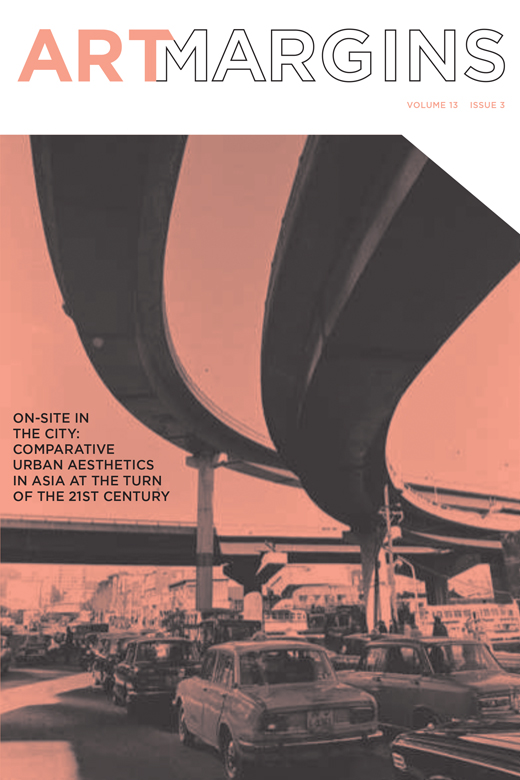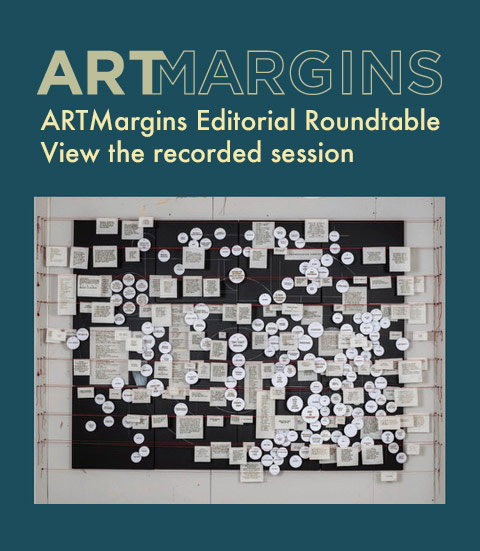The Image of Crisis: Cultural and Artistic Circumstances in Bosnia and Herzegovina (1990–2020)
Irfan Hošić, Slika krize. Kulturne i umjetničke prilike u Bosni i Hercegovini (1990-2020) / The Image of Crisis: Cultural and Artistic Circumstances in Bosnia and Herzegovina (1990–2020) (Sarajevo: Buybook, 2024), 215 pp.
The title of Irfan Hošić’s book, The Image of Crisis: Cultural and Artistic Circumstances in Bosnia and Herzegovina (1990–2020), announces a focus on three decades of development for the country’s art and visual culture. The eponymous “image of crisis” emerges starting in the early 1990s and spans the war period (1992–1995), the immediate post-war years, and the ongoing ideological-administrative transition that continues today. Throughout these thirty years, Bosnian society has faced destruction due to war, changes in its economic system, shifts in state governance, and ideological transformations—all challenges that have inevitably shaped contemporary artistic production. In this context, the phrase image of crisis precisely encapsulates the themes explored in the book.
Hošić—a writer and curator who teaches at the University of Bihać—does not provide a detailed historical chronicle, however. Instead, the themes mentioned above are addressed indirectly—by interpreting the circumstances under which artworks emerge and the direct impact of these conditions on the artistic scene, including public cultural institutions. The contextual analysis and its interpretation are supported by relevant studies from philosophers and historians, guiding the reader towards literature offering a more comprehensive understanding of the context. The book’s exceptional value lies in the way it functions, in many ways, as a catalog for an exhibition that never took place but should have been.
The Image of Crisis consists of nine chapters an introduction, a conclusion, an extensive bibliography, and an index. The introductory chapter provides insight into the book’s methodology, including summaries of each chapter. In the introduction, Hošić explains that his book originated from various lectures and research prepared for different conferences. Given their thematic proximity and the recurring exploration of different forms of crisis, the author unifies these materials under a common title, approaching the chapters as distinct theoretical frameworks through which he positions crisis as the central theme, defining it as a “semantic framework determined by political turmoil, scenarios of conflict, and poverty (both in a social and a cultural context), which collectively generate a general state of crisis.” (p.11)
The first chapter, “Understanding the Context,” begins by situating Bosnia and Herzegovina and the former Yugoslavia more generally within the broader international developments that began in 1989, including the fall of the Berlin Wall and the dissolution of Czechoslovakia. It then examines Bosnia and Herzegovina’s transition from a Yugoslav republic to an independent state—a civic choice that led to a brutal four-year war, resulting in ethnic cleansing and genocide. Hošić accompanies this narrative with a selection of iconic war photographs that document the brutality of the conflict that pushed Bosnian society into a state of continuous crisis. He emphasizes that, despite their journalistic sensationalism, images such as Ron Haviv’s Bijeljina 1992 and Ed Vulliamy’s Trnopolje 1992 became turning points for how the war was interpreted in international centers of power. The chapter continues with an in-depth analysis of the country’s political system and the consequences of its transition from socialism to a capitalism, which was marked by ethnocracy and corruption. He also critically examines the territorial fragmentation imposed by the Dayton Peace Agreement, which divided Bosnia and Herzegovina into the Brčko District and two other entities, Republika Srpska and the Federation of Bosnia and Herzegovina. While Republika Srpska is highly centralized, the Federation is divided into ten cantons, each holding significant political power. This territorial division aligns with ethnonationalist divisions that were solidified through wartime territorial conquests. Bosnia-Herzegovina’s ethno-national constitutional structure—reinforced by borders, state symbols, and by the post-Yugoslav context, along with social and economic precarity—has become a key reference point for Bosnian artists. For this reason, the depiction of Bosnia and Herzegovina’s socio-political realities is useful and helps readers understand the marginalized position of culture in the country, which is shaped by political decision-making that is not centralized at the state level and instead dictated by the aforementioned ethnonationalist territorial structure. Within this context, the Bosnian art scene, with its protagonists assuming roles as educators and activists, ultimately redefined artistic practice as engagement and social responsibility. (p. 40) It is in this context also that the author analyzes what he calls the “aestheticization of decay” in artworks that document, and immortalize, suffering, life in concentration camps, and death.
“Cultural and Artistic Circumstances in Besieged Sarajevo,” the book’s second chapter, consolidates and summarizes the scope of cultural and artistic activities in Bosnia and Herzegovina’s capital city under siege. It identifies key figures, ranging from foreigners drawn to Sarajevo by the resilience of its cultural resistance such as Susan Sontag and Christian Boltanski, to local authors and producers such as Miro Purivatra and Izeta Građević. The chapter also provides an overview of exhibitions and social events (such as Annie Leibovitz: Sarajevo Portraits, and Witnesses of Existence), as well as significant art productions and cultural initiatives led by Sarajevo’s curators, sociologists, artists, and photographers. The phenomenon of cultural resistance, born from the need to preserve fundamental civilizational norms, remains deeply relevant today. Although this topic has been extensively covered in documentaries, films, and festivals.(Noteworthy – Books: Sarajevo Survival Guide, FAMA 1993; Rat kao najveći kulturni događaj by Ugo Vlaisavljević, 2007; The War Is Dead, Long Live the War: Bosnia: The Reckoning by Ed Vulliamy, 2012; Sarajevo Under Siege: Anthropology in Wartime by Ivana Maček, 2009; Films: Savršeni krug by Ademir Kenović, 1997; Scream for Me Sarajevo by Tarik Hodžić, 2017; Remake by Dino Mustafić, 2003; Miss Sarajevo by Bill Carter, 1995. Festivals, Cultural events: WARM festival, Modul Memorije MESS.) Hošić offers a fresh and relevant overview of the artistic events during the period of the Bosnian war (1992-1995), compiling a selection of artworks and activities that serve as a kind of pseudo-archive of the era. Particularly intriguing in this context is his analysis of the visual repertoire of the televised broadcast of Mozart’s Requiem, conducted by Zubin Mehta amid the ruins of the National and University Library that burnt down along with its book collection in 1992. In the second part of the chapter, Hošić examines the role of women, Sarajevo’s wartime fashion chic, and the transition of fashion design to the realm of socially engaged practice.
The third chapter, “Design in Besieged Sarajevo,” serves as a tribute to human creativity, and analyzes various design solutions—such as makeshift stoves for heating and cooking—within the field of visual culture. For example, Hošić interprets the improvised stove, made from oil cans that reached the country as part of international humanitarian aid, through the lens of the subsequent industrial collapse of a country that once counted as being technologically advanced. The chapter also provides a concise history of the development of graphic and product design and its role from the period immediately after World War II up to the wars of the 1990s and it highlights the work of graphic designers from the region, such as Grupa Trio, who viewed design as a powerful tool capable of boosting morale, uniting the nation, and engaging in international diplomatic dialogue. (p. 78)
The fourth chapter, “Staging the Crisis in Dayton Bosnia and Herzegovina,” provides an overview of selected art practices that responded to the political framework of the Dayton Peace Agreement. Hošić in this chapter deals with the work of artists such as Maja Bajević, Lana Čmajčanin, Andrej Đerković, Borjana Mrđa, Gordana Anđelić, and Mladen Miljanović, whose practices engage critically with these realities. One of the artworks presented in this context is Bosnia and Herzegovina – Tailoring and Sewing (2011) by Lana Čmajčanin where the author, responding to Bosnia-Herzegovina’s ethno-national constitutional framework, employs a participatory methodology to open possibilities “tailoring,” altering, and adjusting Bosnia and Herzegovina, thus expressing her (and many others’) dissatisfaction with the imposed framework.
In the fifth chapter, “The Aesthetics of Genocide,” Hošić provides a critical overview of artistic practices that responded to the genocide committed against Bosnians in the town of Srebrenica in 1995. He observes that this major historical trauma was first introduced into art history through the medium of documentary photography, particularly in the works of Zijah Gafić and Tarik Samarah. The author traces the impact of this theme beyond the Bosnian art scene, identifying works created in Serbia, such as Travel Safety (2008) by Milica Tomić and Landscapes Collection (2004) by Darinka Pop Mitić. He further discusses key works essential for understanding this subject, offering original interpretations of artworks that range from Šejla Kamerić’s Bosnian Girl (2003) to lesser-known ones such as Srebrenica (1995) by Romanian artist Dan Perjovschi and Untitled (Srebrenica) (2008) by Adam Helms. The chapter concludes with an analysis of Aida Šehović’s participatory, nomadic memorial project ŠTO TE NEMA? (2006–2020) that emphasizes the work’s role in collective remembrance and engagement.
The following chapter, “The Issue of Migration and Depopulation,” presents one of the most prominent themes explored by Bosnian and Herzegovinian artists both inside and outside of the country, diaspora and nomadism. In his own curatorial practice which informs his book throughout—Hošić is the founder of the Center for Contemporary Culture KRAK in Bihać—the author has addressed issues such as migration within the country; the experiences of migrants traveling on routes that pass through Bosnia and Herzegovina; or the relationships that diasporic artists have to their home country. As he notes, this latter group of artists have been nearly overlooked in Bosnian art history due to “misguided strategic decisions of local cultural institutions.” (p. 133) One of this chapter’s signal contributions is that it brings artists such as Bojan Šarčević, Endi Pošković, Amer Kobašlija, and Irma Markulin, all of whom left the country, back into Bosnia and Herzegovina’s art history.
In the chapter “Cultural Institutions,” Hošić attempts to summarize the position of culture in Bosnia and Herzegovina. One significant challenge to establishing a coherent cultural strategy in the country is the absence of any cultural jurisdiction at the national level, or rather the fragmentation of such jurisdictions across various lower levels of government that are structured along ethnic lines. The consequences of this system are evident in the situation of national cultural institutions dating from the late 19th and the first half of the 20th century, including the National Museum of Bosnia and Herzegovina and the Art Gallery of Bosnia and Herzegovina (formerly the National Gallery), both of whom are now left without state funding. In this chapter, Hošić discusses problems such as corruption, nepotism, administrative complexity, and a lack of competence in the annual financial allocations for cultural projects. He then provides an overview of relevant non-governmental organizations that have contributed to the development of the contemporary art scene, beginning with the Ars Aevi Museum of Contemporary Art, the Soros Center for Contemporary Art Sarajevo, and the Duplex 10 m2 Gallery, followed by the 100 m2 gallery (both in Sarajevo). He also mentions other important projects that have partially filled the gap left by the closure of Duplex in 2018, such as Brodac, Sklop, and Kume International Center. Hošić highlights the notable achievements of the Banja Luka Academy of Fine Arts which has produced several generations of socially engaged artists, the founding of the visual artist group Tač.ka from Prijedor and the Protok Center for Visual Communications, with its annual exhibition Spa Port.
In the following chapter, “The Crisis in Culture and Civilian Resistance,” Hošić guides us through art practices that relate to the institutional crisis of the early 1990s, identifying pioneering practices of cultural activism and tracing their roots to the wartime activities of the Obala Art Center in Sarajevo, an organization that emerged from the Academy of Performing Arts in Sarajevo. The Obala Art Center aimed to engage with boundary-pushing performances, actions, and multimedia projects. During the war, Obala Gallery opened with the exhibition Witnesses of Existence as its first project, and later this served as the first representation of Bosnia and Herzegovina at the Venice Biennale.
Hošić continues with an overview of artistic practices that were driven by civic activism and protest, such as Amir Husika’s Nothing Is the Same Anymore, a work created using archival material, texts, and maps that served as activist contribution to the turbulent protests of 2014. Another relevant practice that Hošić mentions is a 2015 project by the #IAmTheMuseum movement, which emerged as a response to the collapse of the National Museum of Bosnia and Herzegovina, the oldest museum in the country. This action had a strong visual component, featuring a series of portrait photographs by Zijah Gafić titled Guardians of the Museum. The closure of the National Museum in its turn sparked the art-activist project Culture Shut Down, (2012) by artist Azra Akšamija. Similar actions dedicated to the National Museum were organized in response to the closure of the Art Gallery of Bosnia and Herzegovina.
The final chapter is titled “Art and Terrorism,” a theme Hošić interprets through a selection of artworks that recall the 2001 attack on the World Trade Center in New York City. However, this time around, the burning towers are not in New York, but instead they are postmodern architectural landmarks in Sarajevo that were set ablaze by bombardments in 1992, an architectural ensemble in flames that became the motif of the poster for Šejla Kamerić and Enes Huseinćehajić’s film Do You Remember Sarajevo, and for artist Maja Bajević’s work ManKind IV (2003). As Hošić points out, “It was only after the attack on the WTC in 2001 that it became possible to redefine the visual significance of the destruction of the UNIS skyscrapers.” (p. 177) Alongside artworks that rely on explicit visual references terrorism, Hošić also introduces works and performances that emerged from exploring the relationship between identity (often national, or religious) and security, as for example the performance Homage to Harald Szeemann (2003) by the artist Alma Suljević, which was realized—almost guerrilla-style—during the opening of Szeemann’s exhibition Blood and Honey(2003).
Hošić clearly defines “initiat[ing] dialogue and critically grounded discussion” (p. 193) as the primary goals behind the publication of The Image of Crisis. The fact that the book is essentially a compilation of texts written over several years implies certain shortcomings, but these are easily overlooked due to Hošić’s engaging and dynamic style, as well as the exceptional selection of artworks. True, the methodological approach taken in the book results in some repetitions—specifically, descriptions of certain historical and social contexts. Also, some important artworks, such as Maja Bajević’s Women at Work (which explores the position of Srebrenica women refugees) or works by Adela Jušić (who frequently references the post-socialist societal context) are not mentioned. Also, while the author is critical of political structures and, in a more general way, of public institutions of culture, his evaluation of organizations focused on visual culture and contemporary art—which, although relevant, were mostly financed outside Bosnia and Herzegovina—remains mostly uncritical.(Matthew Webber, The Instrumentalization of Contemporary Art in Bosnia-Herzegovina, 2013 – 2018, Doctoral thesis, University College London, 2020.)
Despite this, The Image of Crisis fills a long-existing gap in the theoretical and historiographical treatment of contemporary art in Bosnia and Herzegovina and its historical development between 1990s and 2020. As such, the book represents a significant contribution to the documentation, cataloging, and historicization of contemporary art in the country, not to mention its contextualization within an international context.(This is especially in terms of publications written in the Bosnian language by Bosnian art historians.) For readers outside Bosnian-Herzegovina, the book’s rich bibliography is particularly valuable, as it provides nearly all the relevant published materials necessary for a deep understanding of the topic. Given that its author is an important member of the local art scene and a direct witness to what he discusses, the reflections and interpretations he presents are truly invaluable for those who seek to understand contemporary art in Bosnia and Herzegovina. Hošić insightfully and convincingly responds to the question posed by the Bosnian philosopher Ugo Vlaisavljević (whom he quotes regarding the fragmentation in Bosnian society): “Can Bosnian and Herzegovinian society still be spoken of as a community?” (p. 37) Through his presentation of the production of contemporary art in different parts of the country, and by registering its diasporic echoes worldwide, Hošić demonstrates that artists in Bosnia-Herzegovina face the same problems as in other parts of the world, and that they respond to these challenges and crises, as do artists elsewhere, by building independent networks of cooperation, revealing in the process a well-connected and solid social community.




